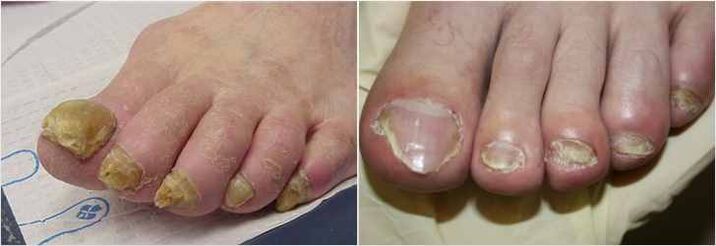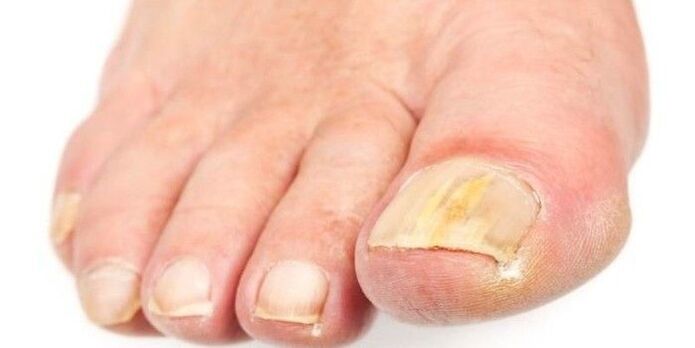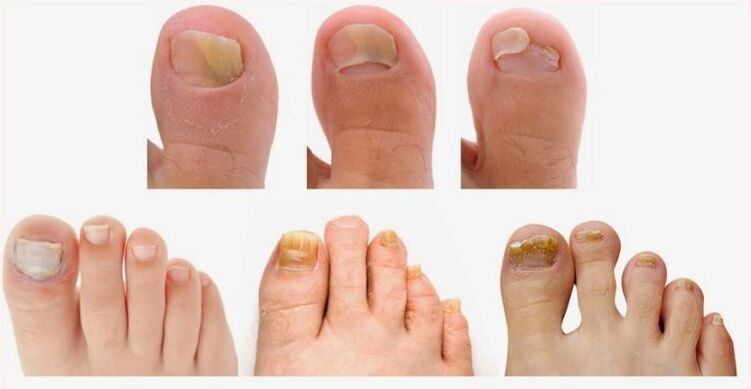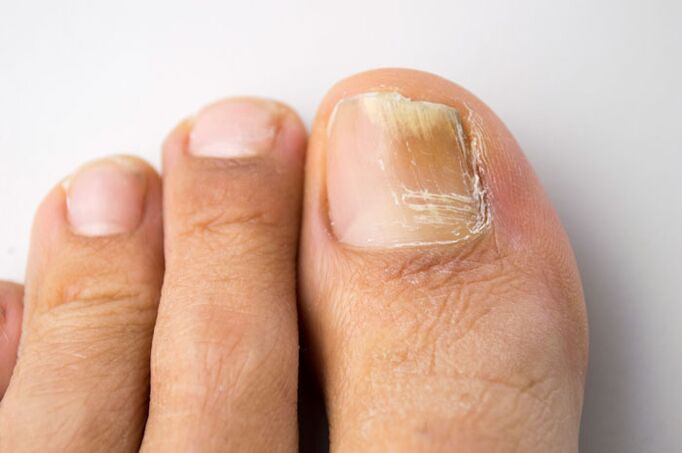Many changes in the legs in the legs may think that people have a mushroom infection of medical care from medical care, such as onychomycosis. The mushroom infection of nails is sometimes contagious in the situation or associated with weak hygiene. In fact, there are up to 10% of all adults, mushroom nail infections. This percentage increases 20% of adults over 60 years. In fact, non-unusual invisible nails can cause a series of conditions, but not limited, causing fungal infection. There are many reasons that nails can appear differently.

Onychomycosis is a fungal infection that generally causes a special mushroom type known as Dermatophyte. Since most of these infections are relatively surface, the present procedures seem to be well done. It's not so because the nail is relatively flawless. Examples of states that often make mistakes for mungal nails are yellow (onicolysis), hematoma, green nails (usually caused by pseudomonas bacteria), bones (usually psoriasis) and nail infection (thamonichia) and late damage.
Other conditions that may be instead of mungal nails:
Lines and ranges: they can be considered common and normal. They can deteriorate during pregnancy. In the center of the nail, there can be a great scale injuries. Some people can see these changes after chemotherapy.
Kenile nails: Age, nails become fragile and the ranges and nail layers are tip. To prevent this, you need to use special solutions and baths.
White or yellowish nails can occur due to onycholiz. This means leaving the plate from the nail base. Color where the air is under the nails. Treatment is not to cut the board short, not in the bottom and not to polish. If you need to hide the color, you have to wait two to three months. Regular onkelos can make nails sensitive to mushroom infection. Red or black tiles occur without injury to hematoma or blood below the nail. If there is a black place underneath the injuries, you must visit a dermatologist or orthopenist (skin cancer associated with pigmentable cells) to make sure that it is not melanoma (skin cancer) can rule out harmful biopsy harm (cancer).
Psseisomonas can lead to pseudomonas bacteria growing under the nail base. This infection can cause an unpleasant odor of nails. Treatment consists of cutting nails in a short place in four weeks in a short way, hide the color and wait two months to three months, polishing polishing. Soak the plates in any water (and dry the legs thoroughly after the pinch. If the problem has disappeared, there are medicinal recipes for the treatment of the doctor.
The skin around the nail is called fat and redness paronychia. This is the skin's infection (cuticle) below the nail. If the infection is sharp (there is a quick start), usually stems from bacteria. It can react to the hot baths but it is better not to correct yourself but it is better to see a doctor immediately. Chronic Paronichia, Cuticle occurs when cuticle inflammation or irritation over time. Sometimes mushrooms will use damaged skin and infect it. The therapy begins with the dryness of the skin and removing the water. If the problem is not disappeared, you must consult a doctor. Antibiotics are not often used, but may be required with a serious infection.

Chronic nail injury can damage the nails that can be very similar to fungal nails. Some injuries can always cause changes that can imitate the appearance of mushroom nails. Microchyton mushrooms that can live in the land and cause mushroom infections of skin, hair or nails.
The mushroom infection of nails in normal healthy people is caused by a mushroom that falls into wet areas. In the gym or in swimming pools, utility levers in common sources. Family members who use the insufficient cleaning of the vehicles (for example, clipper, fileto and leg baths), family members with fungal diseases are also risk factors. This was proven to be more sensitive to the mushrooms of the athletes.
This is believed that it is due to the fact that it is related to the relatives of intense compressed, sweaty boots to the legs of the nails in the legs. The presence of sports loads increases that the nails on the feet of the mushroom further. Re-injury also weakens the plate that is more sensitive to mushroom infection. These include everything that worsens the immune system can be tended to infecture with a mushroom. These include conditions such as accepting any immunosupers such as AIDS, diabetes, cancer, psoriasis or steroids.
Although the fungi is obtained in one place, it is not very contagious. It is so common that this is not something other than a random coincidence that this is a family in this family. The cork can be passed from man to man, but with permanent intimate contact.
Although mungal nails are generally cosmetic problems, some patients suffer pain and anxiety. These symptoms can be aggravated with shoes, activities and unreliable nail decorations. There are many types of mushrooms that can affect the nails. However, the most common, Trichophyton is called Rubrum. This type of mushrooms tends to infect the skin (known as dermatophyptive) and manifests itself in the following special ways. Starts on the tips of nails and lifts the plate: "Distal Onykomycosis" is called. This is the most common mungural infection of nails in adults and children (90% of cases).

It is more common in the toes, the thumb is the first that is usually affected. Risk factors include old age, swimming, sports cargoes, psoriasis, diabetes, family members, infection or depression immune system. Usually the corner of the thumb begins as a colorless area and slowly spread to Cuticle. It is often accompanied by Onycholysis. The most common cause is T.
It starts under the nail and raises the nail: "Proximately Tendon Onykomycosis" is called. This is the least common fungal damage (3% of cases). It looks like a distal type, but starts with a cuticle (the basis of the nail) and slowly spread to the end of the nail. This type is almost always in people with a damaged immune system. Unlike the distal sundrily onychomyco, the underlined fragments of the nail are rare to see the fragments with this situation. The most common reason is T. Rubrum and Dermatophyte.
Maya Onychomycosis: This type, named the above, causes a yeast named Candida, not the renamed trichofyton mushrooms. These nails are more common and is a common cause of mushroom nails. Patients can be associated with paronychia (cuticle infection). Candida can cause yellow, brown, white or thickened nails. Some people who have this infection are also in their minds or chronic paronichia have fungus. White Surface Onychomycosis: In a nail case, a doctor can often clean the white dust material in the upper part of the nail plate. This situation is most common in tropical environments and caused by trichiti management wells and trihofitii management.
It was shown that only one physical examination is an invalid method of diagnosing fungal nails. There are many conditions that can cause nails to be damaged, so doctors even suffer. In fact, the work has shown that only 50% of the abnormal appearance of dirty nails - are stems from a mushroom. Therefore, laboratory tests are almost always shown. Some insurance companies may even ask for a laboratory test for diagnostics to cover antifungal medication. The sample plate is obtained by cutting or digging a hole in or inside. This fabric is sent to a laboratory, which can be painted, cultivated or tested to determine the existence of fungi (to determine the genetic material of organisms).
If the negative outcome of the biopsia is accompanied by a high clinical suspicion, for example, inherent, bleached, thickened and empty tiles, these tests require a second test due to the dissemination of counterfeit negative consequences. The majority of drugs used to treat nail fungi have side effects, so you must get to know the opposite instructions.

There are several doctors who can provide the treatment of nail fungi. The participating doctor can treat nail fungi dermatologists or orthopedists. Any of these doctors can make a proper diagnosis and determine medications that are specific to a fungal infection. An orthopedic or a dermatologist may shake the upper layer of the nail or can take part of the nail.
Creams and other relevant drugs are traditionally more effective than mouth mushrooms. This is due to the fact that nails are very complicated to penetrate external applications. It is also difficult to follow local treatment schemes. Often these drugs require daily applications for a year to see the result. One of the main advantages of local treatment is the risk of serious side effects in the risk of interaction with the minimum risk and mouth therapy.
The coral antifungal therapy operates about 50-75% of the work depending on the drug. This may take it in twelve months to make sure it works or not, because you have to build the nail. While the therapy is working, the mushrooms can return about 20-50%. Currently, the mouth is the best tool for the treatment of fungi over the legs with higher treatment ratios and more shortcuts than local therapy.
There are several innovative treatment methods that are still checked:
- Laser therapy or photodinamic therapy, using the use of light-legged items in a plate, followed by a bright light of the relevant wave length in the nail.
- Use of an electric current to help absorb the appropriate antifungal drugs: it is also called iTopophores.
- Use of a special nail board that makes nail microeglimate useless for the growth of fungi: If it works, this problem can be a cheap way to treat the future.
It is a way of getting rid of nail fungus. The surgical treatment of onhomycoos includes the removal of nail. Nevertheless, it often provides only temporary relaxation and the relapse is common if additional antifungal medications (oral or local) are not used at the same time. However, the surgical removal may be justified when touched with other factors such as nail injuries or infections.

The cork has certain areas that are indeed in hot wet areas (such as sweaty feet), prevent or be used with caution. Although there are no research to confirm this fact, it is believed that the shower, dressing rooms and pools are mushrooms.
Nail varnishes and acrylic nails also make a plate less "breaths" and make it more sensitive to the fungal infection. Mushrooms are everywhere - in the air, dust and soil. Socks and shoes, for example, hygienic measures are reasonable and maybe these measures can help a little. However, it may be good for tight, breathless boots or gender for sports facilities, to be the best prophylactic. Daily washing of the legs can help prevent nail fungi between the dryness and fingers. Mushrooms are moved to pets like cats and dogs. But often does not cause a disease.
Treatment of cork nails can be difficult and can take up to 18 months. Reconstruction and re-structure is common (re-regulatory frequency 40% -70%). Attempt to remove or change risk factors, if possible, it is important to prevent the internet again. People with medical diseases that tend them to mushroom lesions can be treated for longer than mushrooms.
Cork, non-ordinary nails only lead to 50% -60%. Bleached nails (even for doctors) are difficult to note the difference to various reasons. Onychomycosy-is not treated quickly. It is necessary with injuries of medical treatment, mainly legs or nails.























